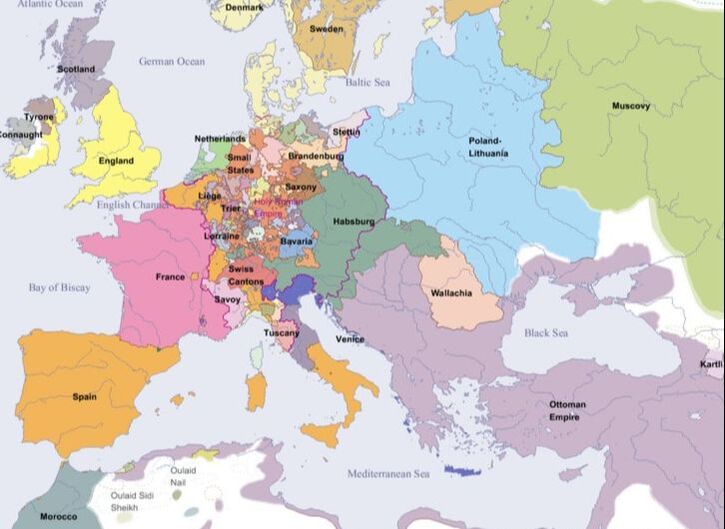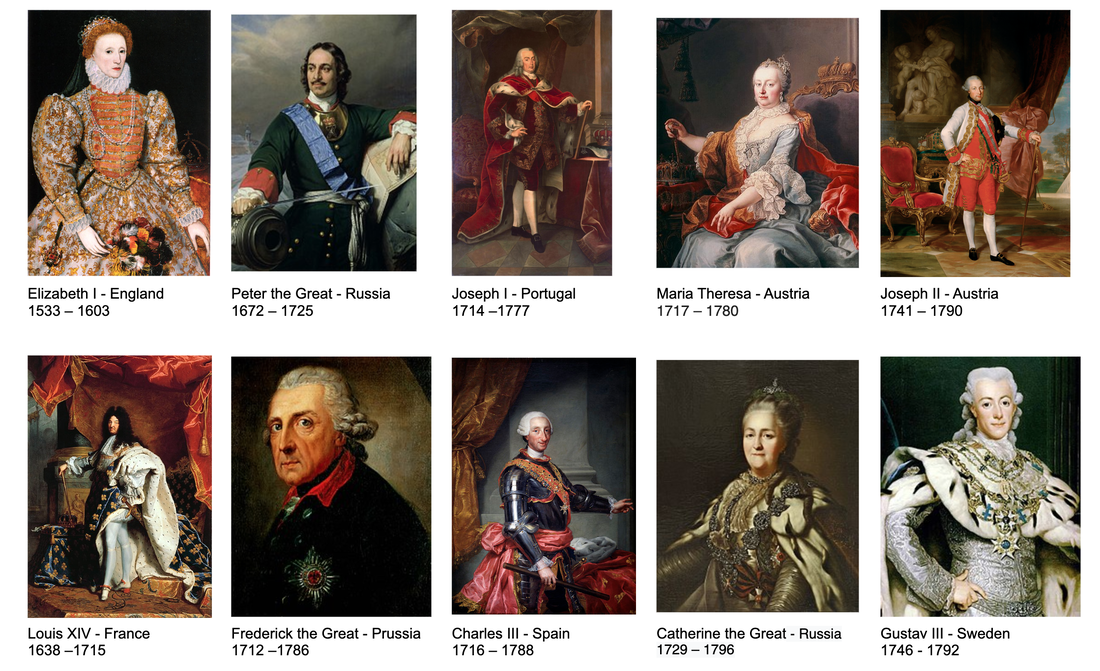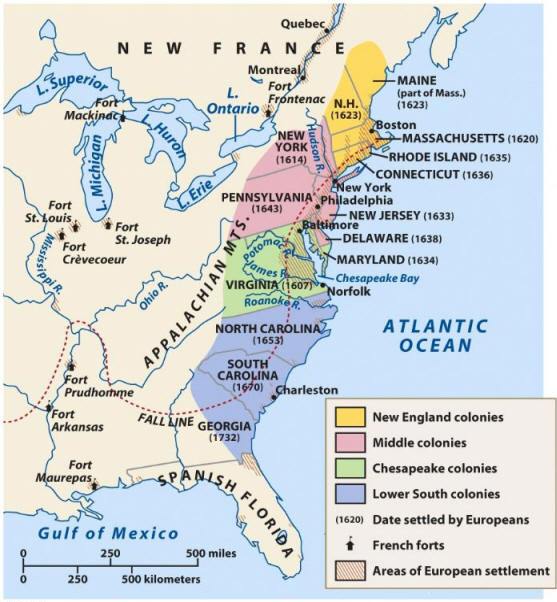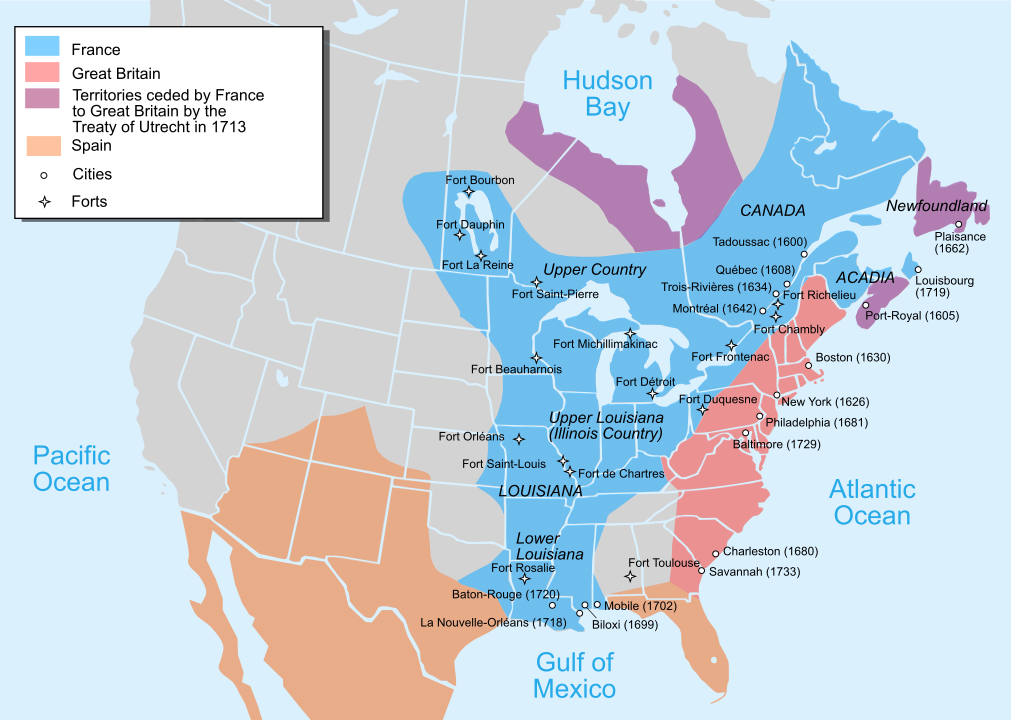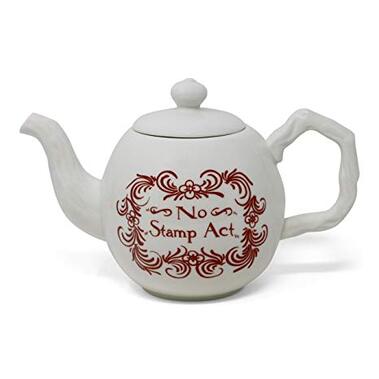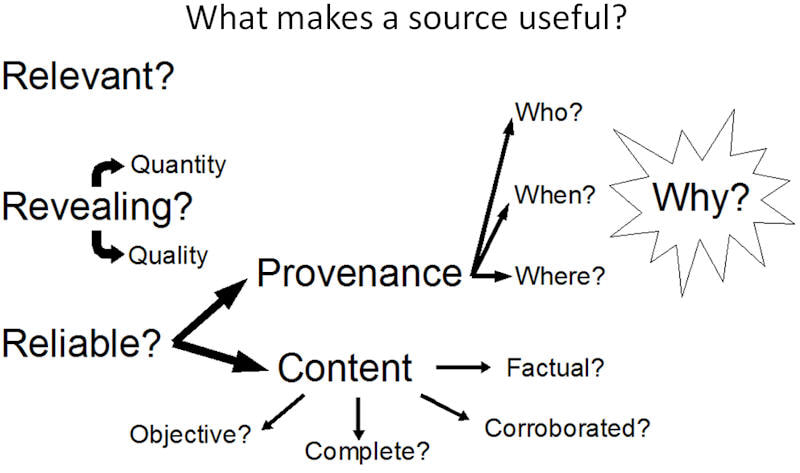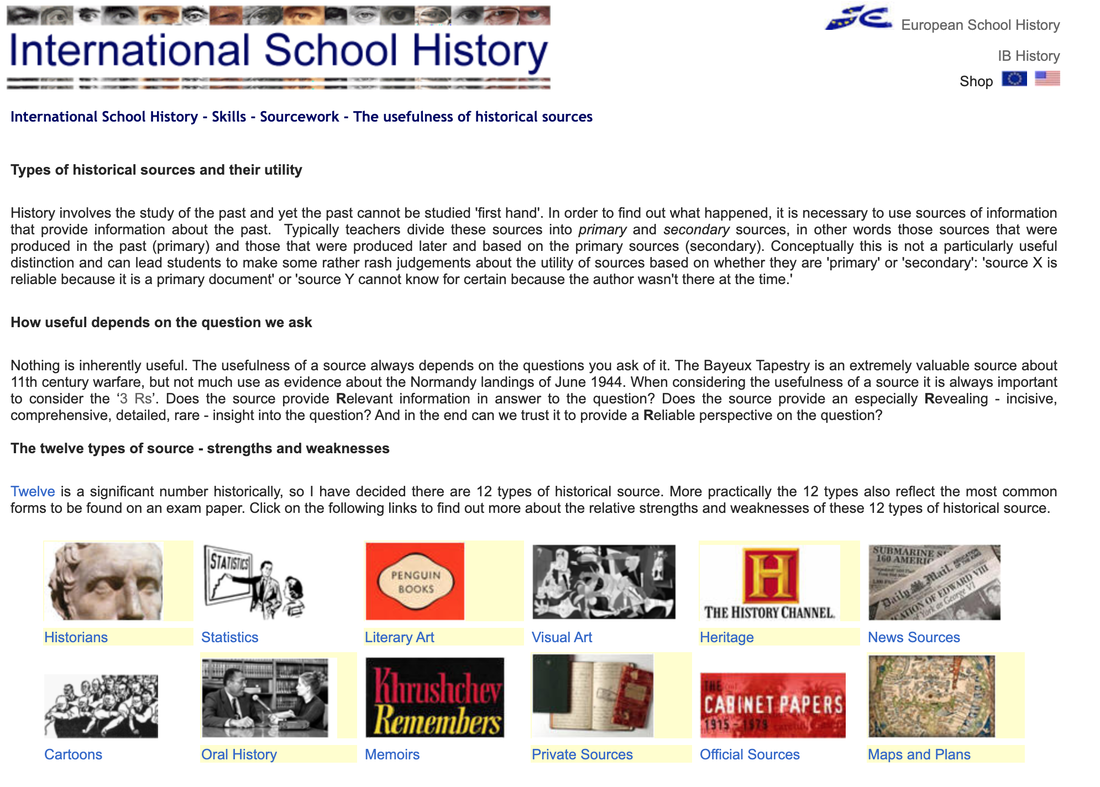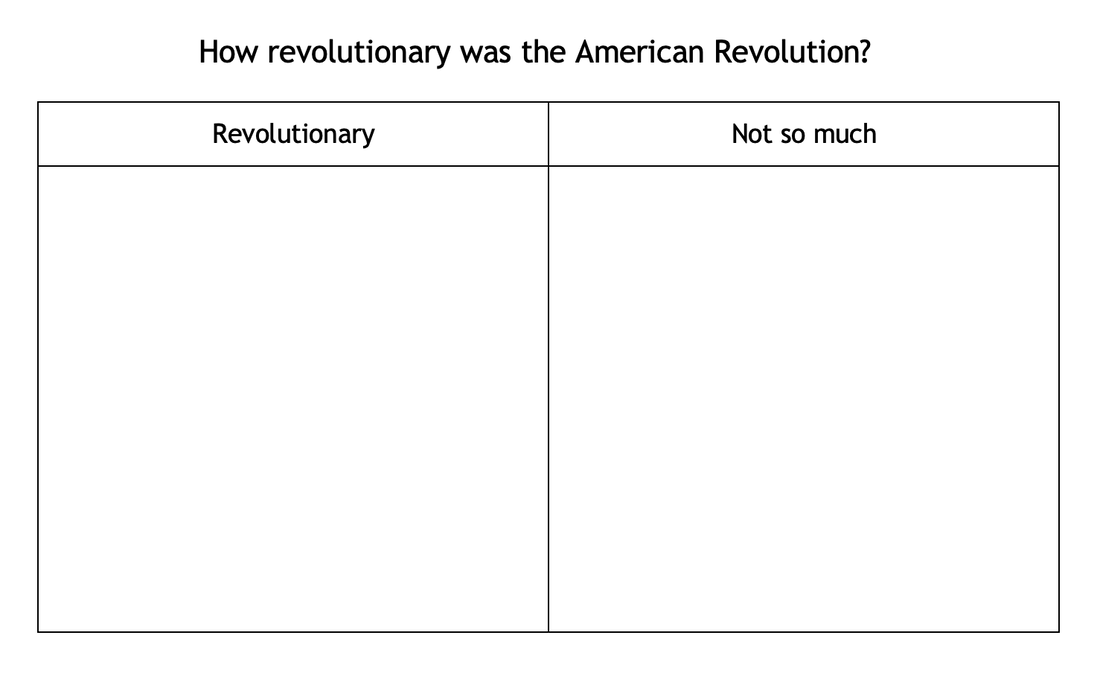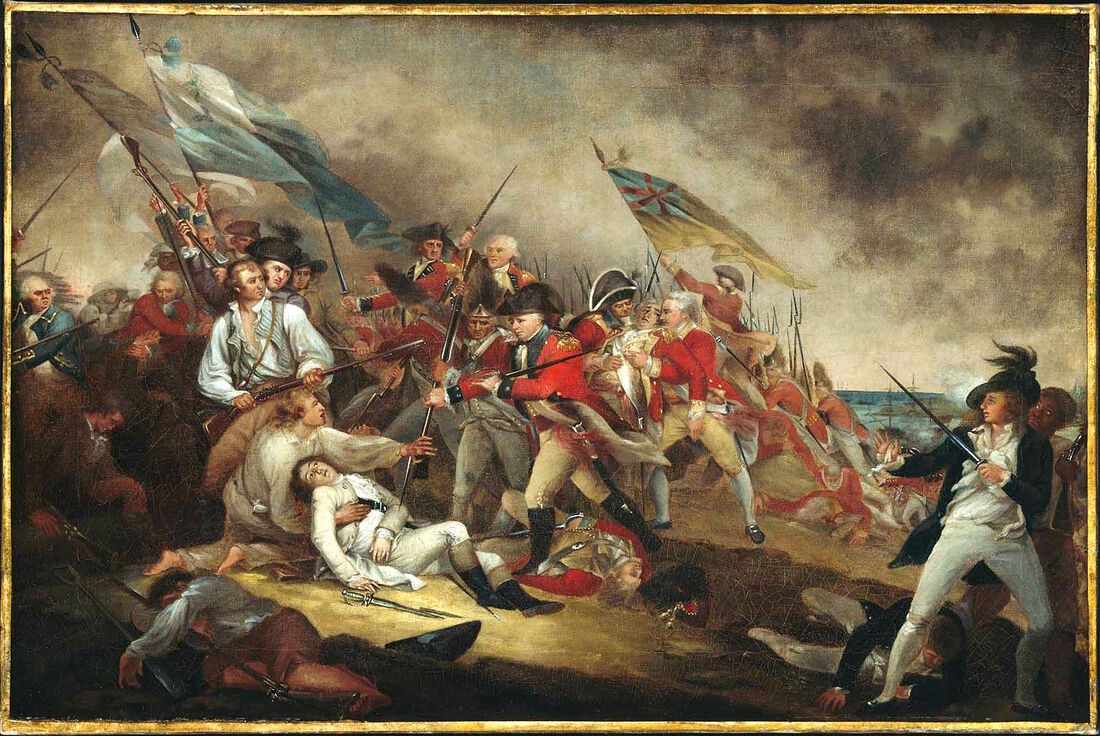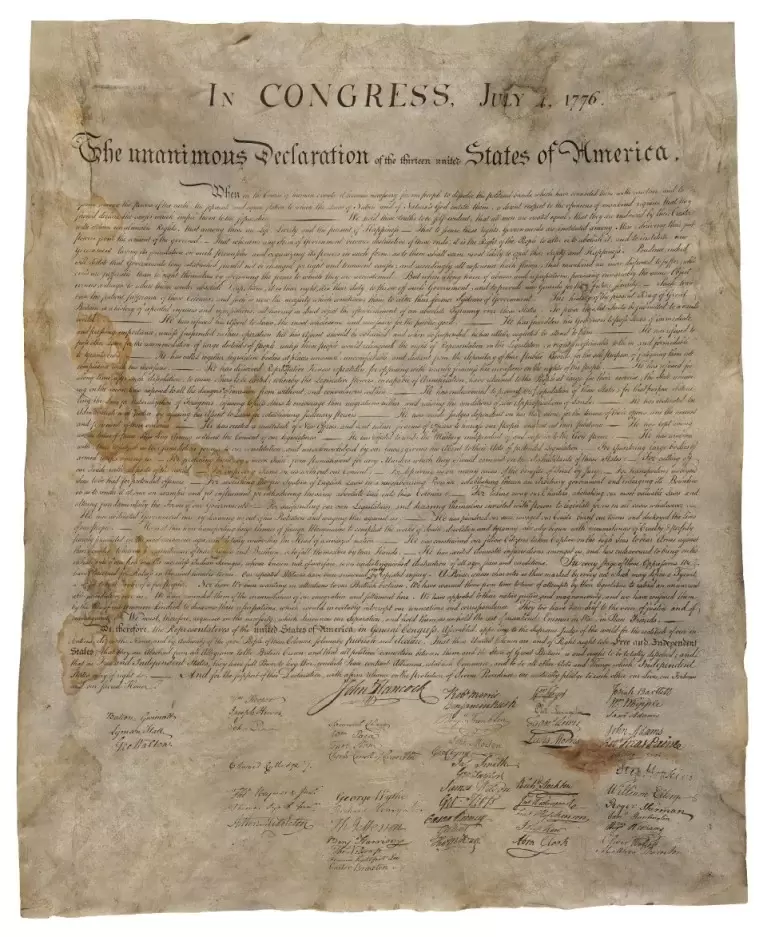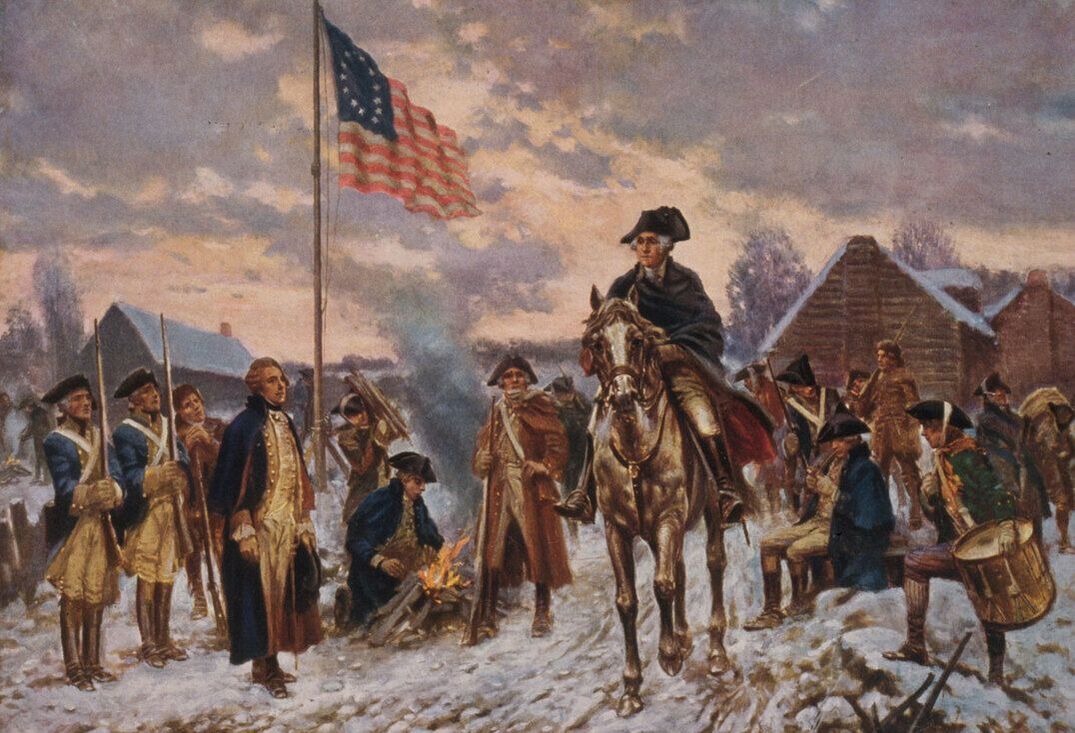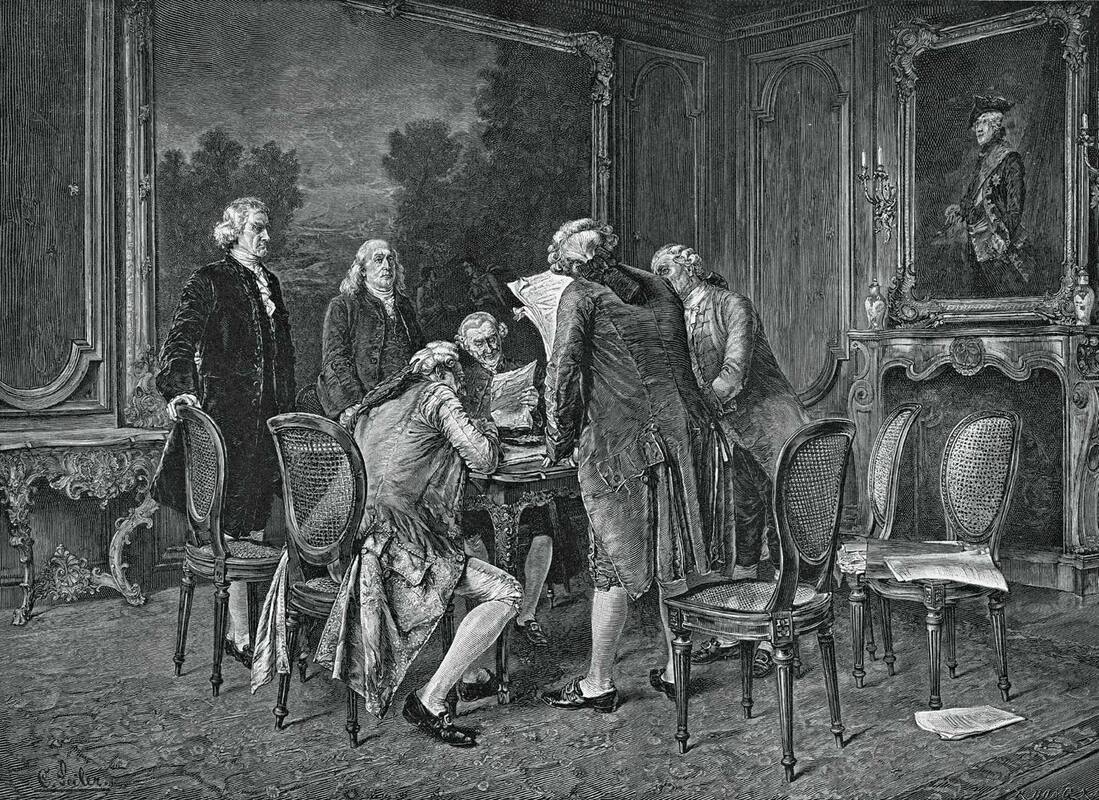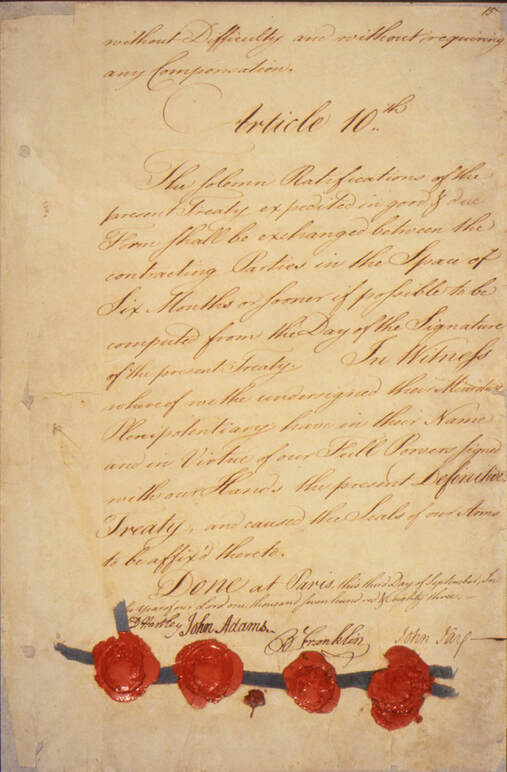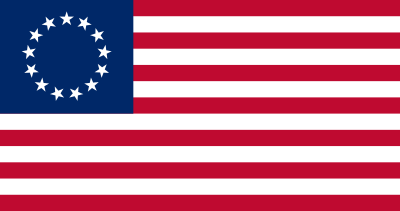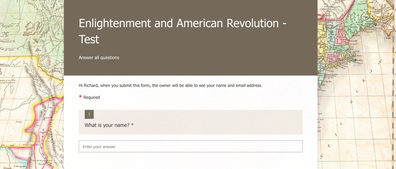* Designated a subject of particular importance in the Anglophone history oral exam.
Matu syllabus reference - Révolution américaine: dessiner l’histoire américaine des 17e et 18e siècles: création d’une société nouvelle par la confrontation entre immigrants et métropole, originalité de l’Indépendance et de la doctrine de Monroe ; analyser les Etats-Unis comme première démocratie de l’époque moderne et comme Etat de droit (constitution américaine). Matu syllabus
Matu syllabus reference - Révolution américaine: dessiner l’histoire américaine des 17e et 18e siècles: création d’une société nouvelle par la confrontation entre immigrants et métropole, originalité de l’Indépendance et de la doctrine de Monroe ; analyser les Etats-Unis comme première démocratie de l’époque moderne et comme Etat de droit (constitution américaine). Matu syllabus
Lesson 1 - The origins of nation states.
Where did nation states come from?
Look at this fantastic time lapse film of European frontiers. If you jump forward in time to the middle ages, you'll notice that very few of the nation state that exist today existed then. And even those that did exist had frontiers very different to today. Move the film forward to 1066. Which countries do you recognise that exist today? Which important ones are missing? Then let the film run on. At which times does Europe seem to change most? What causes this? Are there times when nothing much seems to happen? At what point does Europe really start to resemble the Europe of today?
|
|
Despite what nations would like you to believe, nations have not existed for very long. The modern nation state were largely created in the 19th century and the concept of nationalism as we understand it today, was also invented at that time.
To understand the origins of nation states, we need to look back again at the late middle ages. As feudalism declined and trade and towns grew, wealth was generated that did not come from the land. The towns needed protection and ease of trade, the monarchs wanted taxes and more and more territory. Powerful monarchs sought to consolidate their power by taking over the territories of weaker neighbours and centralising power. Sometimes though diplomacy, but often through war, in the late 15th and early 16th century the modern nation states began to take on a recognisable shape.
Centralisation in states throughout Europe meant that law making was carried out in the capital city and these laws were applied and enforced throughout the kingdom. Trade flowed more freely across the kingdom as standard laws reduced local tolls, taxes and regulation. Increased wealth and more efficient tax collection made monarchs more able to fund the professional armies that enabled them to defend and expand their territories still further. Power became increasingly concentrated.
To understand the origins of nation states, we need to look back again at the late middle ages. As feudalism declined and trade and towns grew, wealth was generated that did not come from the land. The towns needed protection and ease of trade, the monarchs wanted taxes and more and more territory. Powerful monarchs sought to consolidate their power by taking over the territories of weaker neighbours and centralising power. Sometimes though diplomacy, but often through war, in the late 15th and early 16th century the modern nation states began to take on a recognisable shape.
Centralisation in states throughout Europe meant that law making was carried out in the capital city and these laws were applied and enforced throughout the kingdom. Trade flowed more freely across the kingdom as standard laws reduced local tolls, taxes and regulation. Increased wealth and more efficient tax collection made monarchs more able to fund the professional armies that enabled them to defend and expand their territories still further. Power became increasingly concentrated.
|
In England, the War of Roses (1455-85) saw the Tudor dynasty defeat their Yorkist rivals and though marriage consolidate that power. In France by 1500, Picardy, Anjou, Brittany and Burgundy came under the centralised control of the Valois kings with the notable military support of the Swiss mercenaries. A unified Spain also was born by 1500. The key event here was the marriage in 1469 of Isabella of Castile to Ferdinand of Aragon. The final piece of the puzzle was put into place when the last of the Spanish Muslim states, Granada, was conquered in 1492. As we have seen, the commercially rich Protestant Dutch would assert their independence from the Spanish crown. Until the 16th century, the Low Countries – corresponding roughly to the present-day Netherlands, Belgium, and Luxembourg – consisted of a number of small kingdoms, almost all of which were under the supremacy of the Holy Roman Empire. In 1568 the Netherlands, led by William I of Orange, revolted against Philip II because of high taxes and persecution of Protestants. Russia grew from its base in Moscow, over the decades conquering more and more territory. By 1547 under Ivan the Terrible, the first tsar, Russia had become a centralised, multi-ethic empire.
|
(Below) Europe in 1600
|
What happened when they went to war with each other?
There were many religiously motivated wars in the 17th century but the most significant was the Thirty Years' War. The Thirty Years' War was a war fought primarily in Central Europe between 1618 and 1648. One of the longest and most destructive conflicts in human history, as well as the deadliest European religious war in history, it resulted in eight million deaths.
Initially a war between various Protestant and Catholic states in the fragmented Holy Roman Empire, the war became less about religion and more of a continuation of the France–Habsburg rivalry for European political pre-eminence. It began when Holy Roman Emperor, Ferdinand II, tried to impose Catholicism on the northern Protestant states. Sweden's support for the Protestants and Spain's desire to crush the Protestant Dutch rebels resulted in a full-scale European war. By the time that Catholic France entered the war in support of the Protestants against the Austrian Hapsburgs in 1635, religion was evidently less important than power politics.
Peace of Westphalia (1648)
The Thirty Years' War devastated entire regions, with famine and disease resulting in high mortality in the populations of the German and Italian states. The Thirty Years' War ended with the Peace of Westphalia (1648). The war altered the previous political order of European powers. Perhaps the most significant political consequence was the rise of France under the Bourbon Kings.
The Treaty of Westphalia not only established the right of monarchs to decide the official religion of their territory but also the modern concept of national sovereignty. This is the idea that there is no higher power than the power of the individual nation state and that no other body or state can have authority over what goes on within the state. The state is independent.
There were many religiously motivated wars in the 17th century but the most significant was the Thirty Years' War. The Thirty Years' War was a war fought primarily in Central Europe between 1618 and 1648. One of the longest and most destructive conflicts in human history, as well as the deadliest European religious war in history, it resulted in eight million deaths.
Initially a war between various Protestant and Catholic states in the fragmented Holy Roman Empire, the war became less about religion and more of a continuation of the France–Habsburg rivalry for European political pre-eminence. It began when Holy Roman Emperor, Ferdinand II, tried to impose Catholicism on the northern Protestant states. Sweden's support for the Protestants and Spain's desire to crush the Protestant Dutch rebels resulted in a full-scale European war. By the time that Catholic France entered the war in support of the Protestants against the Austrian Hapsburgs in 1635, religion was evidently less important than power politics.
Peace of Westphalia (1648)
The Thirty Years' War devastated entire regions, with famine and disease resulting in high mortality in the populations of the German and Italian states. The Thirty Years' War ended with the Peace of Westphalia (1648). The war altered the previous political order of European powers. Perhaps the most significant political consequence was the rise of France under the Bourbon Kings.
The Treaty of Westphalia not only established the right of monarchs to decide the official religion of their territory but also the modern concept of national sovereignty. This is the idea that there is no higher power than the power of the individual nation state and that no other body or state can have authority over what goes on within the state. The state is independent.
Activity
- Why did nation states begin to emerge in the late 15th and early 16th century? Illustrate your answer with reference to two states from this time.
- Why was the Peace of Westphalia so important?
Lesson 2 - Enlightened absolutism
The Netherlands and Britain were not typical of the 17th century. Most European countries were absolute monarchies. Absolute monarchy is a form of monarchy in which one ruler has supreme authority and where that authority is not restricted by any written laws, legislature (parliament), or customs. Many European monarchs, claimed supreme autocratic power by divine right, and that their subjects had no rights to limit their power. This is what political scientists call 'traditional authoritarianism', because power was passed on from father to son, through time and through one family. In some European countries, this form of government lasted until the 20th century. As an inherited power, traditional authoritarianism can be distinguished from modern authoritarianism, which emerged after World War 1 with the rise of authoritarian political parties, such as the Nazis in Germany. There are still some absolute monarchies in the world today, mainly in the Middle East.
As a form of government, they emerged in Europe in the 16th century as new nation states sought to centralise and strengthen their power against enemies abroad and opponents within. Typically this meant imposing one religious faith and weakening towns, regional nobility and representative assemblies. In some countries, notably Britain as we have seen, this failed as Britain became a constitutional monarchy. In other countries, like France, Prussia (northern Germany) and Russia, it succeeded.
In the 18th century a number of absolute monarchs came under the influence of the ideas of the Enlightenment and they sought to rule according rational and scientific principles of good governance. These monarchs have become known as enlightened despots. They enjoyed the despotic power of absolute monarchs but ruled with the general interests of the nation in mind.
As a form of government, they emerged in Europe in the 16th century as new nation states sought to centralise and strengthen their power against enemies abroad and opponents within. Typically this meant imposing one religious faith and weakening towns, regional nobility and representative assemblies. In some countries, notably Britain as we have seen, this failed as Britain became a constitutional monarchy. In other countries, like France, Prussia (northern Germany) and Russia, it succeeded.
In the 18th century a number of absolute monarchs came under the influence of the ideas of the Enlightenment and they sought to rule according rational and scientific principles of good governance. These monarchs have become known as enlightened despots. They enjoyed the despotic power of absolute monarchs but ruled with the general interests of the nation in mind.
Activity - Absolute Monarchs - Weakest link balloon debate - Who was the greatest absolute monarch?
There are two aspects to this assessment. You will begin by producing a standard piece of research about one of the absolute monarchs listed below. These monarchs will be allocated randomly. These accounts will be relatively short - 500-600 words - a highly selective, almost hagiographic summary of the life and achievements of your allocated monarch. It is very important that this is written in your own words and accurately referenced with an appended bibliography.
The Monarchs
There are two aspects to this assessment. You will begin by producing a standard piece of research about one of the absolute monarchs listed below. These monarchs will be allocated randomly. These accounts will be relatively short - 500-600 words - a highly selective, almost hagiographic summary of the life and achievements of your allocated monarch. It is very important that this is written in your own words and accurately referenced with an appended bibliography.
The Monarchs
Having completed your research account you then need to prepare for the debate in pairs. Each member of the class will represent a monarch and speak on their behalf. As in all 'balloon debates', the idea is that the balloon is sinking fast and cannot carry the weight of all the people (the absolute monarchs). Each monarch will need to make the case for why they should be saved.
|
In this balloon debate we are also going to incorporate the rules of the popular TV show The Weakest Link. We are going to have a series of rounds. At the end of each round, all the monarchs will vote to jettison one least impressive absolute monarch. In each round you will only be allowed to make one point, the one reason why you should be saved. You will not be allowed to repeat this point in future rounds, so you must prepare enough points (9) if you want to win. As well as a game of history, it is also a game of performance and strategy. It is a game of performance because matters is how well the point is made. It is a game of strategy because you need to decide which are your strongest and weakest points. For example, do you make your strongest points in the early rounds when your chances of survival are greatest or do you save them for when the going gets tough? Watch some of this film in order to get an idea of how it will work.
|
|
Lesson 3 - Enlightenment Political Philosophy
|
|
|
The Enlightenment was an intellectual and cultural movement of the seventeenth and eighteenth centuries. As we have seen one of the most important features of the Enlightenment was the Scientific Revolution, it emphasised reason, logic, criticism and freedom of thought over faith and superstition. For a quick recap watch the two films above. But the Enlightenment wasn't limited to science. Having seen the benefits of applying the scientific method to the natural world (natural philosophy), what happened next was the result of applying the same techniques to the social world (political philosophy). The paradigm shift in natural philosophy had revolutionised how humans understood the physical world. Political philosophers questioned how the human world - society, government, economy - was organised and asked difficult questions such as, is monarchy the most efficient form of government? is social inequality natural? must we always obey our leaders?
What is philosophy?
What is philosophy?
|
|
More on thinking philosophically Two outstanding books are Sophie's World available in whatever language you speak and the Philosophy Files a cartoon illustrated introduction to Philosophy. From Philosophy magazine are these Philosophy experiments: Is torture ever justified?, Would you eat your cat? Should you kill the backpacker? etc. They are all interesting. Choose one or two and have a go and think for yourself. |
What is political philosophy?
Political philosophy can be defined as philosophical reflection on how best to arrange our collective life through our political institutions: laws, monarchy, parliament etc. Political philosophers seek to establish basic principles that will, for example, justify a particular form of state, show that individuals have certain rights, or tell us how a society's wealth should be shared among its members. Some political philosophers have tried to justify current political institutions (conservatives); others have painted pictures of an ideal state that is very different from anything we have so far experienced (radicals).
Political philosophy can be defined as philosophical reflection on how best to arrange our collective life through our political institutions: laws, monarchy, parliament etc. Political philosophers seek to establish basic principles that will, for example, justify a particular form of state, show that individuals have certain rights, or tell us how a society's wealth should be shared among its members. Some political philosophers have tried to justify current political institutions (conservatives); others have painted pictures of an ideal state that is very different from anything we have so far experienced (radicals).
The Political Philosophers of the Enlightenment.
|
Niccolò Machiavelli (1469-1527) was technically not part of the Enlightenment and is rather associated with the Renaissance. However, most histories of modern political philosophy begin with Machiavelli who was a diplomat for 14 years in Italy's Florentine Republic.
His most famous work ‘The Prince’ is a handbook for politicians that rejected the traditional view that a ruler should be virtuous. The word Machiavellian is now shorthand to describe politicians and their actions that are only concerned with getting and exercising power. A successful politician must be amoral, ruthless and feared because ‘Since love and fear can hardly exist together, if we must choose between them, it is far safer to be feared than loved.’ |
|
|
Thomas Hobbes (1588-1679) was an English philosopher.
In his book Leviathan (1651) – by the way a Leviathan is a sea monster - Hobbes is famous for saying that man’s life without strong government would be naturally “solitary, poor, nasty, brutish and short.” Hobbes saw man as naturally selfish and immoral. Because of fear of death the individual will give away his rights to a king. The important point is that kings grew powerful not by divine right (the medieval concept) but by force. A king’s power came not from above but from below, from his subjects. Since the king got his power from the people, the people had the right to overthrow him. |
|
|
John Locke (1632-1704) was an English philosopher who thought that the human mind at birth was a tabula rasa (blank tablet) that we are born without innate ideas, and that knowledge comes from experience derived from sense perception.
His most important political book was Two Treatises on Government (1689). Locke argues men are born free and equal in rights. Government derives its authority from the agreement of the governed to be governed through a ‘social contract’. Powers of government are limited and maybe removed if poorly exercised. John Locke is considered to be the father of modern liberalism and was very influential on the American revolutionaries. |
|
|
Montesquieu (1689- 1755) Charles-Louis de Secondat, was a French philosopher.
Montesquieu's most influential work L'esprit des lois (1748) argued for the separation of powers in government. That a government’s powers should be divided between the legislature (law maker), the executive (law enforcer), and the judiciary (law interpreter). These should be separate from and dependent upon each other so that the influence of any one power would not be able to exceed that of the other two. This was radical because it completely ignored the three Estates structure of the French Monarchy: the clergy, the aristocracy, and the common people, the essence of feudalism. |
|
|
Voltaire (1694 –1778)
François-Marie Arouet, a French writer and philosopher, as Voltaire he is remembered as a courageous polemicist who fought for toleration, civil rights – the right to a fair trial and freedom of religion – and someone who denounced the hypocrisies and injustices of the ancien régime. The ancien régime involved an unfair balance of power and taxes between the First Estate (the clergy), the Second Estate (the nobles), and the Third Estate (the commoners and middle class, who were burdened with most of the taxes). His famous defence of the right to free speech is often quoted: ‘I may not agree with what you say, but I will defend to the death your right to say it’. |
|
|
Jean-Jacques Rousseau (1712 –1778) a Genevan philosopher, writer, and composer.
The complete opposite of Hobbes, Rousseau argued that man is naturally good but is corrupted by bad society ‘Man was/is born free; and everywhere he is in chains’ Social Contract (1762). Good government for Rousseau will be that which is of the greatest benefit to society as a whole. Rather than have a government which protects the wealth and the rights of the powerful few, government should be fundamentally based on the rights and equality of everyone, the ‘General Will’. If any form of government does not look after the rights, liberty, and equality of everyone, then that government should be overthrown. |
|
|
Diderot (1713 – 1784) and D'Alembert (1717 – 1783) – Les Encyclopédistes.
The Encyclopedia (between 1751 and 1772) was a series of books based on the collective effort of over one hundred French thinkers. The central purpose of the work was to take learning away from the influence of the Church. For the Encyclopédistes, human improvement was not a religious issue, but simply a matter of mastering the natural world through science and technology and mastering human behaviour through an understanding of how individuals and societies work. |
|
|
Thomas Paine (1737-1809) was an author, pamphleteer, radical, inventor, intellectual, revolutionary, and one of the Founding Fathers of the United States.
Born in England, Paine emigrated to the British American colonies in 1774 in time to participate in the American Revolution. His principal contribution was the pamphlet Common Sense (1776), arguing for colonial America's independence from Great Britain. He also wrote the Rights of Man (1791) in which he argued for political rights for all men because of their natural equality and against all forms of hereditary government. Only a democratic republic could be trusted to protect the equal political rights of all men. |
|
|
Activities
After having heard my lecture and reading through the list of philosophers, choose one that interests you. Make a short two minute film about the life and main ideas of your chosen philosopher, watch the film provided and search the internet to get some more ideas. Now learn 'who is who' of all the Enlightenment thinkers - scientists and philosophers - by playing this fling the teacher quiz. We will be playing another game in class that will 'test' your knowledge of them all. (See right) |
|
|
|
Extension materials
K Clark's classic Civilisation television documentary series examines the impact of the Enlightenment. The Scottish Enlightenment - BBC Scotland. Links: Wikipedia, Philosopher.org on the Enlightenment, History World. See Tom Richey's videos and notes on the Enlightenment. https://www.tomrichey.net/enlightenment.html |
Lesson 4 - Colonising America - Interpretations
Until the middle of the eighteenth century, almost all European countries were ruled by monarchs (kings or queens). The monarchs believed that God had given them the right to rule and that their people should obey them as they obeyed God. Sometimes monarchs asked noblemen for advice about how they should rule. But ordinary people had no say at all in how their countries were ran. Their duty was to pay their taxes and obey their rulers. As we have seen, the new ideas of the Enlightenment changed all of that. In this section we shall see how these new ideas produced revolution in America and later we will look at France.
Settling in the New World
After Columbus landed in America the Spaniards and Portuguese claimed that all of North and South America belonged to them. But other countries did not accept this. The French took control of Canada and the valley of the Mississippi river from New Orleans. The English took control of the east coast of North America.
The following extract is taken from an old history textbook and is a fairly standard account of the origins of the United States:
After Columbus landed in America the Spaniards and Portuguese claimed that all of North and South America belonged to them. But other countries did not accept this. The French took control of Canada and the valley of the Mississippi river from New Orleans. The English took control of the east coast of North America.
The following extract is taken from an old history textbook and is a fairly standard account of the origins of the United States:
The English first settled in an area which they called Virginia in honour of Queen Elizabeth (the 'Virgin Queen'). In 1620 a group called the 'Pilgrim Fathers' set sail for Virginia. Their leadership came from the religious congregations of English Dissenters (Calvinists) who had fled England for the relative calm and tolerance of Holland. Concerned with losing their cultural identity, the group later arranged with English investors to establish a new colony in North America. The colony, established in 1620, became the oldest continuously inhabited British settlement and the second successful English settlement (after the founding of Jamestown, Virginia in 1607) in what was to become the United States of America. Their ship, the Mayflower, was blown off course and arrived further north in an area called Massachusetts. The first winter was very hard and many of the settlers died. Today, Americans celebrate the survival of the Pilgrim Fathers on Thanksgiving Day. In Canada, Thanksgiving Day is celebrated on the second Monday in October. In the United States, it falls on the fourth Thursday of November.
|
Activities
1. Read the extract from the textbook very carefully so as to get a clear idea about the main points it is making. 2. Watch the Crash Course video opposite to 7.20. You may want to watch it a few times because it contains a lot of information. 3. Make a list of the main ways in which John Green's (Crash Course) interpretation is different to that of the textbook. 4. The textbook account is only about 200 words and clearly cannot cover as much history as the film, but this is not the only reason why it is different. In 200 words or less, write your own account of the colonising of America which takes into account what you have learnt from John Green. 5. Suggest some possible reasons for the why the text book account is different from yours. |
|
Lesson 5 - Thirteen Colonies and the Seven Years' War
|
Thirteen colonies
English set up more colonies, until by 1760 there were thirteen in all. In 1760 there were two and a half million people living in the thirteen colonies. About two million of the settlers had emigrated from Europe, most of them from Britain and Ireland. They went for various reasons. Some wanted to escape from religious persecution. Others hoped to make their fortunes in a new world where land was cheap and work plentiful. As we have seen in our last unit, about half a million Americans had no such hopes. They were the slaves. They had been captured in Africa and sold as slaves to white Americans who needed labourers to grow cotton, sugar and tobacco in the hot southern colonies. They and their children and their children's children could never hope to enjoy the freedom of the new world. How Britain ruled its American colonies The thirteen colonies were part of the British Empire. In 1760 its king was George III. George ruled his Empire with the advice of his parliament, which was made up of wealthy landowners. George appointed a governor to rule each colony in his name. Each colony also had an elected Assembly which advised the governor about what the colonists wanted. For many years this system worked well. The colonists had a great deal of freedom. They could raise their own taxes and decide how to spend most of the money. But the governor kept them in touch with what the king wanted. |
The Seven Years' War
The Seven Years' War was a global conflict fought between 1756 and 1763. It involved every European great power of the time and spanned five continents, affecting Europe, the Americas, West Africa, India, and the Philippines. The conflict split Europe into two coalitions, led by the Kingdom of Great Britain (including Prussia, Portugal, Hanover, and other small German states) on one side and the Kingdom of France (including the Austrian-led Holy Roman Empire, the Russian Empire, Bourbon Spain, and Sweden) on the other. The war was successful for Great Britain, which gained the bulk of New France in North America, Spanish Florida, some individual Caribbean islands in the West Indies, the colony of Senegal on the West African coast, and superiority over the French trading outposts on the Indian subcontinent.
The Seven Years' War was a global conflict fought between 1756 and 1763. It involved every European great power of the time and spanned five continents, affecting Europe, the Americas, West Africa, India, and the Philippines. The conflict split Europe into two coalitions, led by the Kingdom of Great Britain (including Prussia, Portugal, Hanover, and other small German states) on one side and the Kingdom of France (including the Austrian-led Holy Roman Empire, the Russian Empire, Bourbon Spain, and Sweden) on the other. The war was successful for Great Britain, which gained the bulk of New France in North America, Spanish Florida, some individual Caribbean islands in the West Indies, the colony of Senegal on the West African coast, and superiority over the French trading outposts on the Indian subcontinent.
As far as this unit is concerned, the Seven Years' War was significant for two reasons. Firstly, for the French, the cost of the war and the territorial losses incurred, seriously weakened the monarchy. This financial debt and the later cost of military support against the British became a central cause of the French Revolution. (see Matu 2). Secondly, for the British, the cost of defending their colonies had been enormous. The British Government decided to make the colonialists help pay towards the cost of the war by raising their taxes. The colonists protested at this. They said it was not right that a parliament in England, elected by people who lived over 3,000 miles away could tax them. They felt that they should only pay taxes imposed by an Assembly (parliament) they had elected themselves. The British ignored their protests. In 1765 the London Parliament introduced the Stamp Act. It put a tax on documents like contracts and wills. News of the Stamp Act caused outrage in the American colonies. Groups of men known as the 'Sons of Liberty' organised resistance to it. Their slogan was 'No taxation without representation'.
Lesson 6 - The Boston Massacre or the Incident on King Street.
The campaign against the Stamp Act was successful. People refused to pay the tax. King George's government decided to drop the Stamp Act but they replaced it with the Townshend Acts which introduced taxes on imported goods such as tea, glass, paint and paper. The colonists felt this was almost as bad. In protest, they organised a boycott of British goods. Boston in Massachusetts took a lead in these developments. It was a prosperous port with a population of over 16,000. Many British soldiers (who were known as 'Redcoats' because of the colour of their uniform) were stationed there. Relations were bad between the soldiers and the citizens of Boston. One reason for that was that the Redcoats, who were very badly paid, often took part-time jobs. They were willing to work for low wages and this cut the wages of the local people.
On 5 March 1770, a dispute broke out between a group of soldiers and some citizens. The soldiers opened fire. Five people were killed and seven were injured. This became known as the Boston massacre and passed into American folklore as an example of British cruelty.
The campaign against the Stamp Act was successful. People refused to pay the tax. King George's government decided to drop the Stamp Act but they replaced it with the Townshend Acts which introduced taxes on imported goods such as tea, glass, paint and paper. The colonists felt this was almost as bad. In protest, they organised a boycott of British goods. Boston in Massachusetts took a lead in these developments. It was a prosperous port with a population of over 16,000. Many British soldiers (who were known as 'Redcoats' because of the colour of their uniform) were stationed there. Relations were bad between the soldiers and the citizens of Boston. One reason for that was that the Redcoats, who were very badly paid, often took part-time jobs. They were willing to work for low wages and this cut the wages of the local people.
On 5 March 1770, a dispute broke out between a group of soldiers and some citizens. The soldiers opened fire. Five people were killed and seven were injured. This became known as the Boston massacre and passed into American folklore as an example of British cruelty.
|
On the importance of understanding who started it see this.
|
Activity
Consider the four written accounts of the events of 5th March 1770. 1. Are there any similarities in the four versions of events? Do the authors agree on anything? Explain your answer using examples from the sources. 2. What are the most important differences between the accounts? What reasons can you suggest to explain those differences? 3. What would a historian have to do in order to produce a 'reliable' account of the events 5th March 1770? 4. Now consider the images of the 'Boston Massacre'. Many of the images are very similar, does this mean that are more accurate than the written accounts? Why can images like this be of particular value for people investigating the past? |
Lesson 7 - How Revolutionary was the American Revolution?
At last the British backed down. They removed all taxes except one on tea, which they kept to show that they had the right to tax the American colonists. The Americans then began to smuggle in tea for which the tax had not been paid.
The Boston Tea Party
Most British tea came from the East India Company. The company was in deep financial trouble and the government decided to help it by cutting the tax on tea to America. This made the company's tea cheaper than the smuggled tea. But many merchants would have lost money if smuggling ended.
At last the British backed down. They removed all taxes except one on tea, which they kept to show that they had the right to tax the American colonists. The Americans then began to smuggle in tea for which the tax had not been paid.
The Boston Tea Party
Most British tea came from the East India Company. The company was in deep financial trouble and the government decided to help it by cutting the tax on tea to America. This made the company's tea cheaper than the smuggled tea. But many merchants would have lost money if smuggling ended.
|
In Boston people attended a protest meeting on 16 December 1773. They decided to go aboard the ships and dump the tea in the harbour. A group of men disguised themselves as native American Indians. They climbed onto the three tea ships in the harbour and emptied the tea into the sea. Three hundred and forty-two tea chests were destroyed. It was said at the time that the pile of dumped tea was so high in the harbour that some of it was falling back onto the ships. Later some people went so far as to give up eating fish caught in Boston harbour 'because they had drunk of the East India Tea' .
(If you have time or the inclination the first 30 minutes of the film to the right is a dramatic reconstruction of the events of December 1773). |
|
The Intolerable Acts
King George was outraged when he heard about the Boston Tea Party. Parliament passed Acts which closed the port and reduced the power of the Massachusetts Assembly. The Americans called these measures 'the Intolerable Acts'. Together the Colonies decided that they must make a united stand against King George and the British parliament. In September 1774 each of the thirteen colonies sent representatives to a meeting in Philadelphia. The meeting called itself the 'Continental Congress'. The Congress decided to boycott British goods until the Intolerable Acts were removed. But at this stage they were still loyal to King George. They just wanted him to let them decide on their own taxes. They were not yet looking for independence from Britain.
The first shots are fired
The British appointed General Gage to restore order in Boston. He learned that some Bostonians had a large store of arms in Concord, near Boston, and he planned to seize it. On the night of 18 April 1775, British troops set out for Concord. But the rebels learned of their plans and sent messengers to warn the surrounding countryside. The most famous messenger was Paul Revere who we have already come across. At Lexington, on the road to Concord, rebels clashed with British troops. Eight Americans were killed and ten were wounded. Later that day a second battle took place in Concord. The British were forced to retreat to Boston. The Americans now placed Boston under siege. The War of Independence had begun.
King George was outraged when he heard about the Boston Tea Party. Parliament passed Acts which closed the port and reduced the power of the Massachusetts Assembly. The Americans called these measures 'the Intolerable Acts'. Together the Colonies decided that they must make a united stand against King George and the British parliament. In September 1774 each of the thirteen colonies sent representatives to a meeting in Philadelphia. The meeting called itself the 'Continental Congress'. The Congress decided to boycott British goods until the Intolerable Acts were removed. But at this stage they were still loyal to King George. They just wanted him to let them decide on their own taxes. They were not yet looking for independence from Britain.
The first shots are fired
The British appointed General Gage to restore order in Boston. He learned that some Bostonians had a large store of arms in Concord, near Boston, and he planned to seize it. On the night of 18 April 1775, British troops set out for Concord. But the rebels learned of their plans and sent messengers to warn the surrounding countryside. The most famous messenger was Paul Revere who we have already come across. At Lexington, on the road to Concord, rebels clashed with British troops. Eight Americans were killed and ten were wounded. Later that day a second battle took place in Concord. The British were forced to retreat to Boston. The Americans now placed Boston under siege. The War of Independence had begun.
Lesson 8 - Why did the British lose the American War?
When war began between Britain and the American colonists, it seemed likely that Britain would win. It was the most powerful country in the world at that time. The British government had a trained army and one-third of the people in the colonies remained loyal to them. The colonists who supported the struggle against Britain were known as the Patriots. At first they did not have an army or even a leader.
When war began between Britain and the American colonists, it seemed likely that Britain would win. It was the most powerful country in the world at that time. The British government had a trained army and one-third of the people in the colonies remained loyal to them. The colonists who supported the struggle against Britain were known as the Patriots. At first they did not have an army or even a leader.
|
The Battle of Bunker Hill
At this time an American army was besieging General Gage's troops in Boston. Washington set out to lead it, but before he arrived the Americans were defeated in a battle at Bunker Hill (see right). Washington found the American army in terrible shape. He set out to impose discipline. Soldiers who deserted were executed and one officer was whipped in front of his men. Washington wanted to drive the British from Boston. In March 1776 he began to bombard the city with cannon fire. American troops now surrounded Boston and the British commander General Howe realised that he could not hold out. On the night of 17 March the British troops left Boston. |
|
|
Thomas Paine and Common Sense
Although war had started, the Patriots were still not sure if they wanted to leave the British Empire. Most of them were descended from British settlers and they were still loyal to King George. All this changed in January 1776 when a pamphlet called Common Sense appeared. It was written by an Englishman, Thomas Paine. In a plain and easy-to-understand style, he urged Americans to declare their independence and become a republic. Over 150,000 copies of Common Sense were sold and it had a huge impact on the Patriots. (You don't to watch the film opposite but I would, it's very funny. Mark Steel is one of my favourite British comedians.) |
|
The Declaration of independence
On 4 July 1776 the Congress issued the Declaration of Independence. Thomas Jefferson, a delegate from Virginia, wrote it. It claimed that King George had failed to protect the rights of the American people and stated that: 'A Prince, whose character is thus marked by every act which may define a tyrant, is unfit to be a ruler of a Free People.' Below is the most famous extract from the declaration. 'We hold these truths to be self-evident: that all men are created equal; that they are endowed by their Creator with certain inalienable rights; that among these are life, liberty, and the pursuit of happiness; that to secure these rights, governments are instituted among men, deriving their just powers from the consent of the governed; that whenever any form of government becomes destructive of those ends, it is the right of the people to alter or to abolish it and to institute new government.' The ideas contained within this extract were very advanced for the time. It says that a person has certain rights given to him/her from God. To protect these rights, people form governments. If governments fail to protect these rights then the people have a right to form a new government. Jefferson is saying that the British government, by behaving as it did, lost the confidence of the American people. Therefore a new government should be formed in its place. |
The Declaration of Independence raised American spirits but in 1776 and 1777 the war went badly for them. Washington found it hard to keep his army together. Unlike the British, who had full-time soldiers, his army was made up of ordinary men who joined up for six months at a time. Many of them were farmers and when their six months was up, they often went home to look after the farm
Trenton and Valley Forge
In September 1776, the British captured New York, which became the British base for the rest of the war. Washington, fearing that his cause would inevitably collapse as short-term enlistment into the Continental Army expired, launched a risky attack on the little town of Trenton, held by a brigade of Hessians (German troops in British service) on Boxing Day 1776. He won this battle, and although the victory was small in tactical terms, it had a wider strategic impact, showing that the patriots were still in the fight.
Trenton and Valley Forge
In September 1776, the British captured New York, which became the British base for the rest of the war. Washington, fearing that his cause would inevitably collapse as short-term enlistment into the Continental Army expired, launched a risky attack on the little town of Trenton, held by a brigade of Hessians (German troops in British service) on Boxing Day 1776. He won this battle, and although the victory was small in tactical terms, it had a wider strategic impact, showing that the patriots were still in the fight.
|
In 1777, British forces under Lord Cornwallis captured Philadelphia where the Congress met. This was a major blow to the new republic. Washington and his men were forced to retreat to a wild and lonely spot called Valley Forge. (Right)
Here his army spent the winter of 1777-8 in horrible conditions. Food was short and rations were reduced to one-eighth of normal. Disease was widespread and over 2,500 men died. Many soldiers deserted, and Washington and his officers struggled to maintain discipline. Washington won the admiration of his men by remaining with them at Valley Forge. A French nobleman, the Marquis de Lafayette, was there too. He greatly admired what the Americans were doing. Later he played a major role in the French revolution. |
France comes to the aid of the Americans
But while Washington and his men were suffering in Valley Forge, another American army defeated the British at Saratoga. When news of this reached Europe, King Louis XVI of France decided the Americans might win. He declared war on Britain. He wanted revenge for the British conquest of Canada. French help was vital to the Americans. French troops were useful but the French navy was even more important. It made it difficult for the British navy to bring guns, ammunition and fresh soldiers to equip the British armies in America.
The final event in the war showed how important the French fleet was. Washington trapped a small British army under their commander-in-chief, Lord Cornwallis, in Yorktown. Cornwallis had made the mistake of allowing himself to cornered. A French fleet arrived in the harbour and prevented Cornwallis from escaping. Cornwallis had no option but to surrender. He said he was ill and sent his second-in-command, General O'Hara. Washington sent his second-in-command, General Benjamin Lincoln, to accept the British surrender on 19 October 1781. When the British Prime Minister, Lord North, heard this news he said, 'Oh God! It is all over!’ It was. The British had lost their thirteen American colonies.
But while Washington and his men were suffering in Valley Forge, another American army defeated the British at Saratoga. When news of this reached Europe, King Louis XVI of France decided the Americans might win. He declared war on Britain. He wanted revenge for the British conquest of Canada. French help was vital to the Americans. French troops were useful but the French navy was even more important. It made it difficult for the British navy to bring guns, ammunition and fresh soldiers to equip the British armies in America.
The final event in the war showed how important the French fleet was. Washington trapped a small British army under their commander-in-chief, Lord Cornwallis, in Yorktown. Cornwallis had made the mistake of allowing himself to cornered. A French fleet arrived in the harbour and prevented Cornwallis from escaping. Cornwallis had no option but to surrender. He said he was ill and sent his second-in-command, General O'Hara. Washington sent his second-in-command, General Benjamin Lincoln, to accept the British surrender on 19 October 1781. When the British Prime Minister, Lord North, heard this news he said, 'Oh God! It is all over!’ It was. The British had lost their thirteen American colonies.
How to write a history essay.
The first thing a good history essay must do is avoid telling the story. Looking back on the past as a series of events unfolding, it might be tempting to write a 'chronicle' about the past as simply 'one thing after another'. My account of the American War of independence above is a bit like that, it tells the story of some of the important events in the American War. It begins at Bunker Hill and ends at Yorktown, but it does not directly address the question of why the British lost. To answer the question you have to dig around a bit. That's the point, a good essay will have done the digging for you. A good essay will have found all the important bits, put them into labelled boxes, brushed away the loose soil and made a nice cup of tea.
In contrast to my account, a good history essay must explain why the British lost through a series of big points (the labelled boxes), each of which addresses the question. The hardest thing when writing an essay can be to decide what your big points are. Big points are not examples, but rather they are 'themes' that can be illustrated by a number of examples. Big points require you put similar examples together. For example, I have just decided there are three reasons why the British lost:
The first thing a good history essay must do is avoid telling the story. Looking back on the past as a series of events unfolding, it might be tempting to write a 'chronicle' about the past as simply 'one thing after another'. My account of the American War of independence above is a bit like that, it tells the story of some of the important events in the American War. It begins at Bunker Hill and ends at Yorktown, but it does not directly address the question of why the British lost. To answer the question you have to dig around a bit. That's the point, a good essay will have done the digging for you. A good essay will have found all the important bits, put them into labelled boxes, brushed away the loose soil and made a nice cup of tea.
In contrast to my account, a good history essay must explain why the British lost through a series of big points (the labelled boxes), each of which addresses the question. The hardest thing when writing an essay can be to decide what your big points are. Big points are not examples, but rather they are 'themes' that can be illustrated by a number of examples. Big points require you put similar examples together. For example, I have just decided there are three reasons why the British lost:
|
■ Military reasons, especially the role of France.
■ Cultural reasons and the inspiration of Enlightenment ideas. ■ The strengths and weaknesses of important individuals. For each of these 'big points' I can think of a number of examples I can use to support each point. Activity 1. Copy the text 'Why did the British lose the American War? and paste it into a Word doc. 2. Highlight the examples of military, cultural and individuals in different colours. Remember you are looking for examples that can be used to support your point. e.g. do not highlight an example of British military success. 3. Using your colour coded examples, complete this essay plan with examples for each of the three big points we are making. 4. Write an introduction and a conclusion. When completed upload your essay to your OneNote. |
Your browser does not support viewing this document. Click here to download the document.
|
Lesson 9 - What happened after the war of independence?
|
The Treaty of Versailles, 1782
In November 1782 a peace treaty was signed at the French king’s palace at Versailles. The first Article of the Treaty stated: His Britannic Majesty acknowledges the said United States. ..to be free sovereign and independent states, that he treats with them as such, and/or himself, his heirs, and successors, relinquishes all claims to the government, propriety, and territorial rights of the same and every part thereof The Treaty came into effect a year later. On 25 November 1783 George Washington entered New York, as the last British troops left America. He then gave up his command of the army and returned to his plantation in Virginia.
|
The American Constitution
Once the British left, the thirteen colonies had to decide how they would govern themselves. Should they have a king or a president, and how much power should they give him?
Once the British left, the thirteen colonies had to decide how they would govern themselves. Should they have a king or a president, and how much power should they give him?
It took them six years to work out a new Constitution (a set of laws for governing a country). It took a long time because the 13 states could not agree. Should the bigger states have more power than the smaller states? Should there be one representative assembly or two? Who should have tax raising powers? In 1787, one of the most extraordinary meetings of all time took place in Philadelphia. The outcome, was very unexpected:
|
|
Here are some of the points in the American Constitution:
The head of the government would be the president. He was to be elected and to hold office for four years.
There were to be two Houses of Congress (parliament): the House of Representatives to represent the people (elected every two years), and the Senate (one third elected every two years) to represent the states (formerly the colonies). Congress was to make laws and approve taxes.
The Constitution guaranteed human rights to citizens. These included the right to free speech, to a fair trial and to freedom of religion.
A Supreme Court would make sure that all laws passed agreed with the Constitution.
Importantly, each of the three political bodies was meant to act as a check on the others, in order to prevent a concentration of power in any one of them. This is referred to as the checks and balances of the constitution.
The head of the government would be the president. He was to be elected and to hold office for four years.
There were to be two Houses of Congress (parliament): the House of Representatives to represent the people (elected every two years), and the Senate (one third elected every two years) to represent the states (formerly the colonies). Congress was to make laws and approve taxes.
The Constitution guaranteed human rights to citizens. These included the right to free speech, to a fair trial and to freedom of religion.
A Supreme Court would make sure that all laws passed agreed with the Constitution.
Importantly, each of the three political bodies was meant to act as a check on the others, in order to prevent a concentration of power in any one of them. This is referred to as the checks and balances of the constitution.
The USA in the world - The Monroe Doctrine.
As early as 1783 the United States adopted the policy of isolation and announced its intention to keep out of Europe affairs. Ironically it was helped in this by Great Britain which was keen to prevent any rival European powers from intervening in its trading relationship with the USA. In the first years of its independence, the USA depended on the British navy to protect its independence. By 1823 the USA was ready to pronounce on its relationship with the rest of the world. The Monroe Doctrine was issued on December 2, at a time when nearly all Latin American colonies of Spain and Portugal had achieved independence from the Portuguese and Spanish Empires. It stated that further efforts by various European states to take control of any independent state in North or South America would be viewed as "the manifestation of an unfriendly disposition toward the United States."
As early as 1783 the United States adopted the policy of isolation and announced its intention to keep out of Europe affairs. Ironically it was helped in this by Great Britain which was keen to prevent any rival European powers from intervening in its trading relationship with the USA. In the first years of its independence, the USA depended on the British navy to protect its independence. By 1823 the USA was ready to pronounce on its relationship with the rest of the world. The Monroe Doctrine was issued on December 2, at a time when nearly all Latin American colonies of Spain and Portugal had achieved independence from the Portuguese and Spanish Empires. It stated that further efforts by various European states to take control of any independent state in North or South America would be viewed as "the manifestation of an unfriendly disposition toward the United States."
We owe it, therefore, to candor and to the amicable relations existing between the United States and those powers to declare that we should consider any attempt on their part to extend their system to any portion of this hemisphere as dangerous to our peace and safety. With the existing colonies or dependencies of any European power, we have not interfered and shall not interfere. But with the Governments who have declared their independence and maintained it, and whose independence we have, on great consideration and on just principles, acknowledged, we could not view any interposition for the purpose of oppressing them, or controlling in any other manner their destiny, by any European power in any other light than as the manifestation of an unfriendly disposition toward the United States.
The Monroe Doctrine, 1823
Activity
You will need to have watched the films in order to fully answer the following questions.
1. Which Enlightenment thinkers do you think most influenced the ideas contained in the US Constitution?
2. What was different about the US constitution compared to previous government under the 'Articles of Confederation'?
3. How was the US constitution meant to prevent future 'tyrannical' government? (Clue - separation of powers)
4. How did the US constitution protect the rights of the states and the rights of the rich landowners? (Clue - the electoral system)
5. Explain briefly what the Monroe Doctrine set out to achieve.
You will need to have watched the films in order to fully answer the following questions.
1. Which Enlightenment thinkers do you think most influenced the ideas contained in the US Constitution?
2. What was different about the US constitution compared to previous government under the 'Articles of Confederation'?
3. How was the US constitution meant to prevent future 'tyrannical' government? (Clue - separation of powers)
4. How did the US constitution protect the rights of the states and the rights of the rich landowners? (Clue - the electoral system)
5. Explain briefly what the Monroe Doctrine set out to achieve.
Lesson 10 - Revision
There will be three sections to this test.
Section A - Factual recall - This will require one-word answers to a set of factual questions. All the questions will be taken from this quiz.
Section A - Factual recall - This will require one-word answers to a set of factual questions. All the questions will be taken from this quiz.
Section B - Source analysis - You will asked to analyse a series of sources to reflect on the extent to which they agree with each other or the extent to which they help answer a historical question. The concept of the utility of historical sources is useful in this respect. Pay particular attention to Lesson 6.
Section C - Explanatory questions - You will be expected to answer two from the following list of questions. The best answers will try to make a series of Points that are explained with examples:
Section C - Explanatory questions - You will be expected to answer two from the following list of questions. The best answers will try to make a series of Points that are explained with examples:
- With reference to one 'absolute monarch' that you have studied, explain what is meant by the concept of enlightened absolutism.
- What were the main causes of the American War of Independence?
- Why did the British lose the American War?
- What were the consequences of the American War for the USA and the world?
|
Click on the picture to access the test.
|
To conclude...
|
|
|

